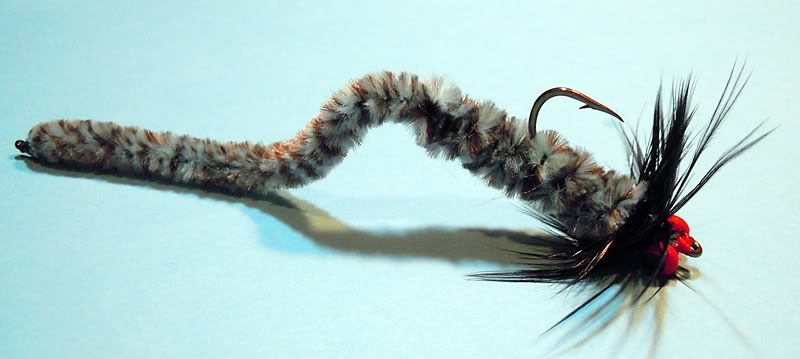I've tied a few of these over the past couple of years for Largemouth Bass, but really haven't used them much yet. Blue/Black is supposed to be a good color combination for bass, so I tied this one up last night:
For you guys that DO fish these (or something similar), do you have better luck with heavier versions hopping along the bottom...or lighter version swimming shallow/mid-depth?
When I used to spin-fish for bass years ago, I would have pretty good luck with plastic worms on 1/16 oz jigheads...just heavy enough to hop, but light enough to slowly swim it as well.
Also...has anyone ever experienced issues with the chenille "unravelling" on these? I DID melt the end of it...





 Reply With Quote
Reply With Quote


